Archipelago of Trades- World History
1/16
There's no tags or description
Looks like no tags are added yet.
Name | Mastery | Learn | Test | Matching | Spaced |
|---|
No study sessions yet.
17 Terms
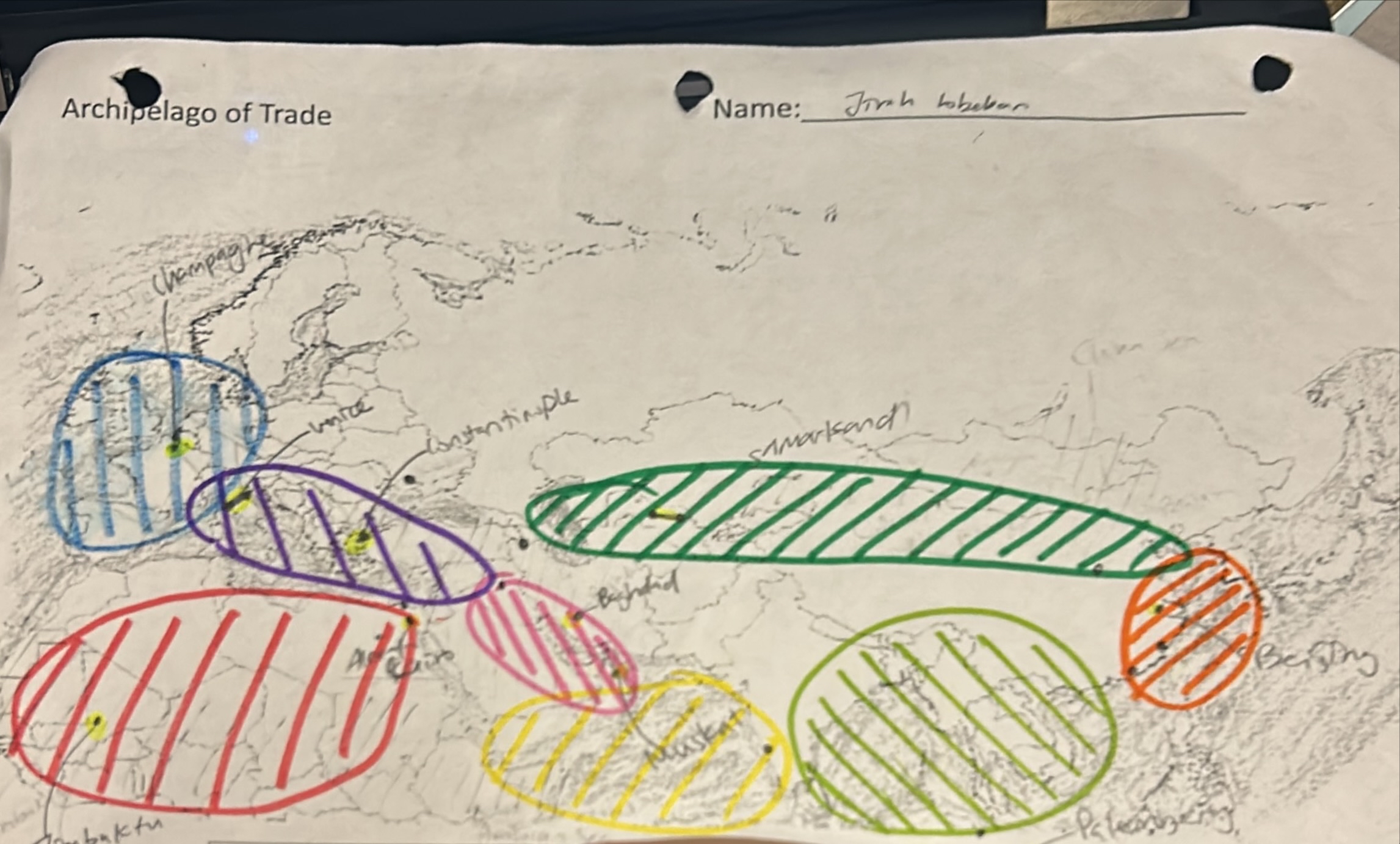
Area that is colored in Blue and its city
Western Europe; Champagne
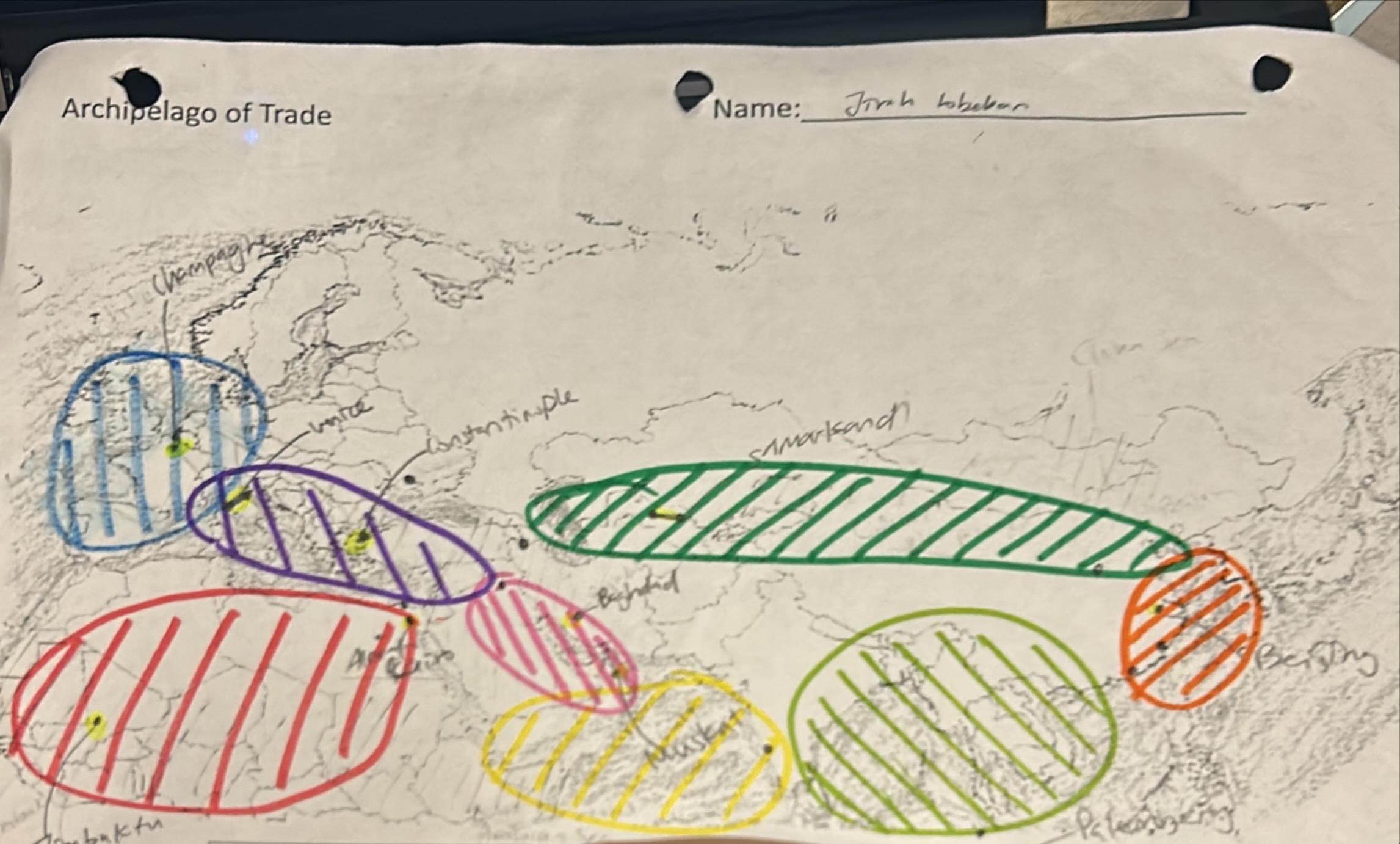
Area that is purple and its city
Easter Mediterranean; Venice, Constantinople
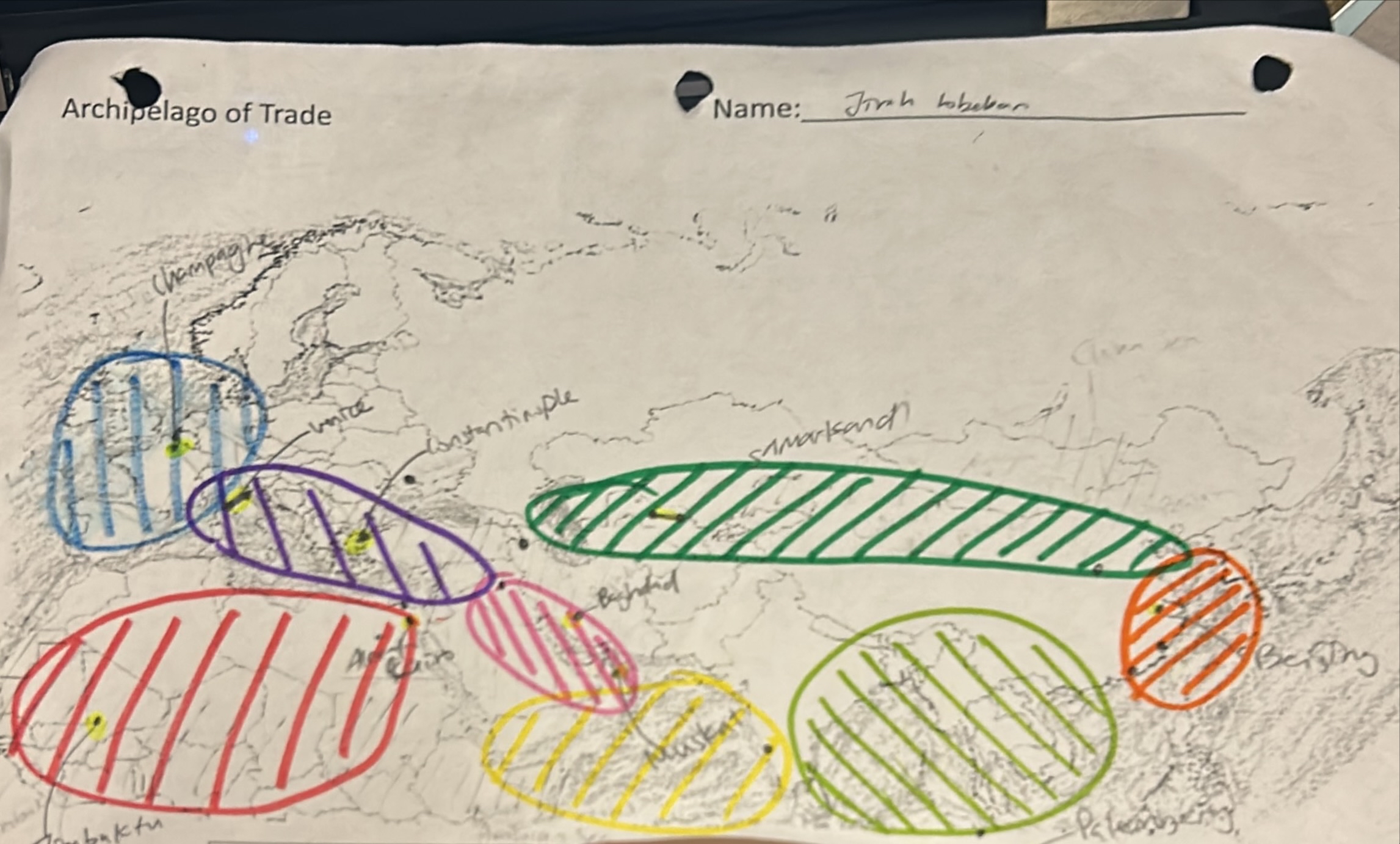
Area that is red and its city
North Africa; Timbuktu and Alexandria, Cairo
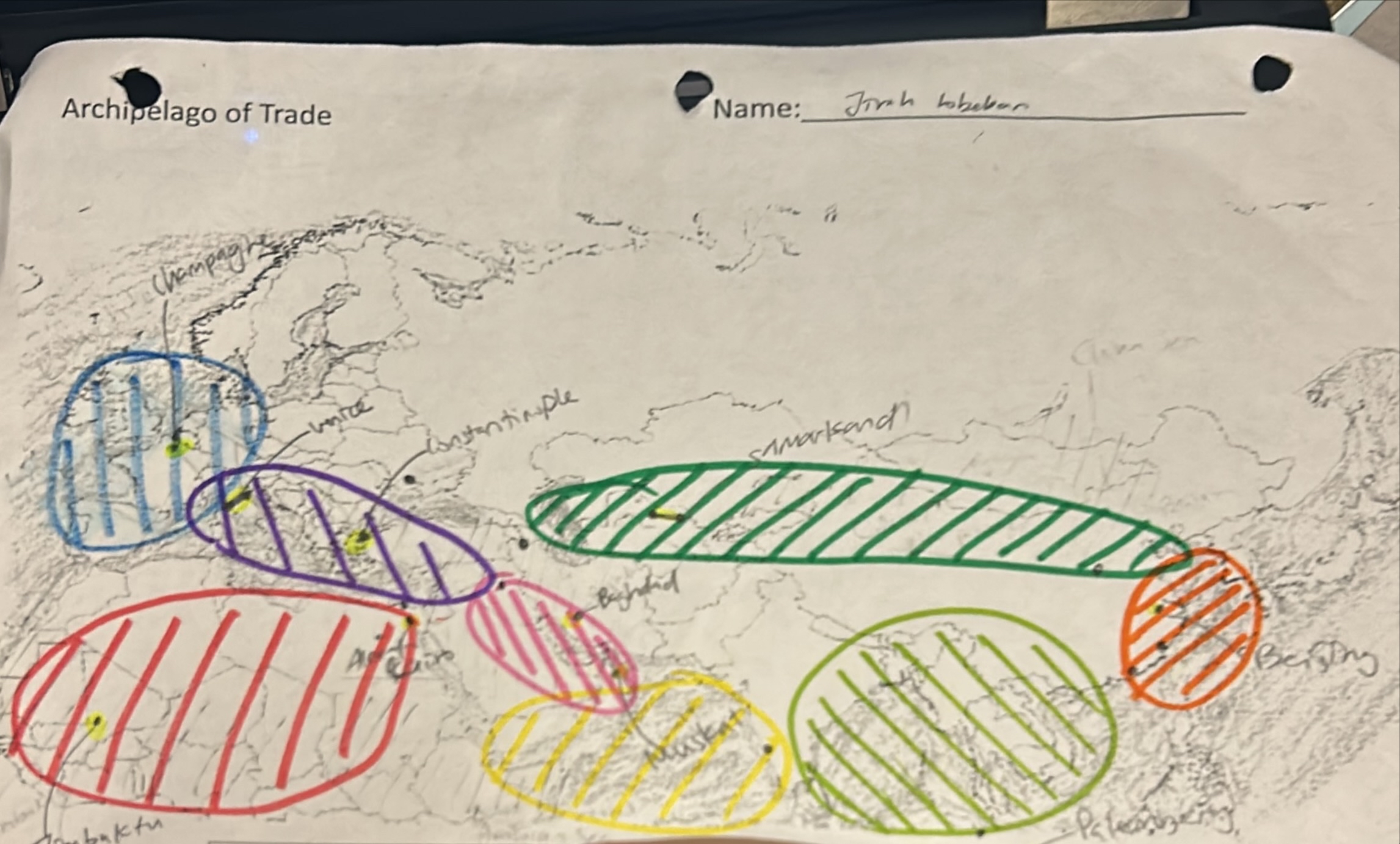
Area that is pink and its city
Persian Gulf; Baghdad
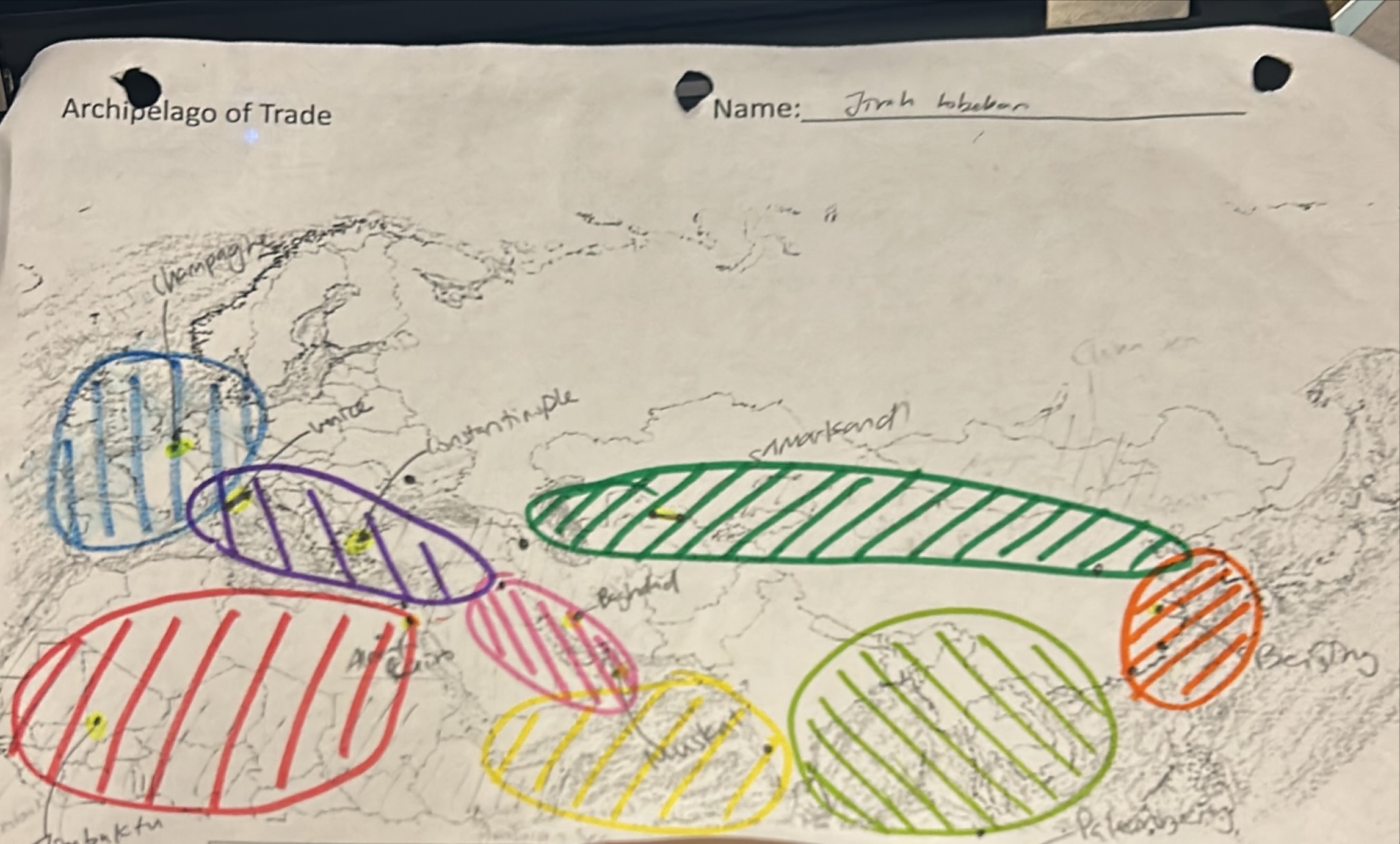
Area that is yellow
Arabian Sea; Muscat

Area that is dark green and its city
C. Asian North West Passage; Samarkand
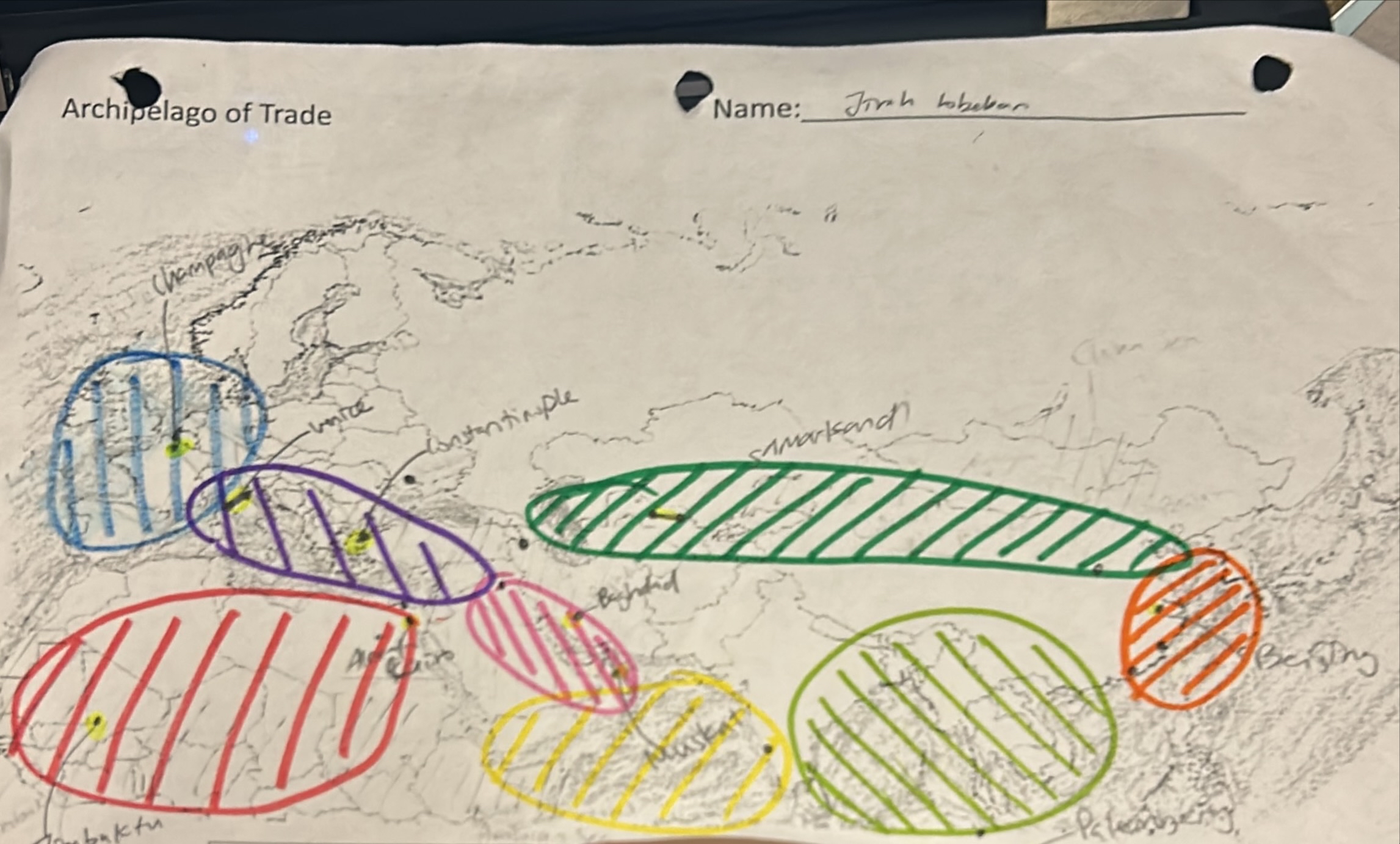
Area that is light green and its city
Southeast Asia; Palembang
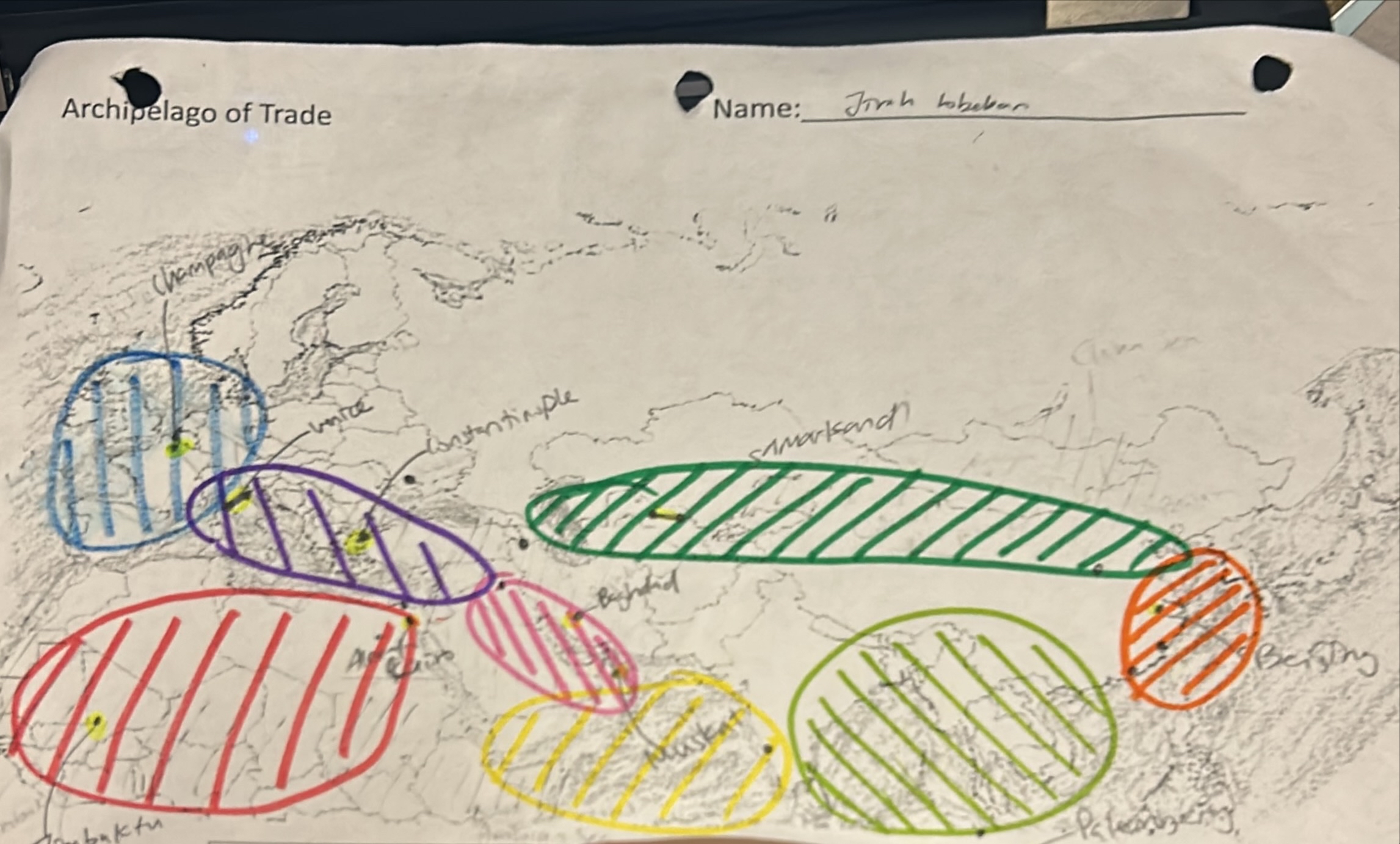
Area that is covered in orange and its city
China Sea; Beijing
Persian Gulf City, Trade, Significance
Baghdad
Knowledge
Intellectual Growth
Central Asia’s Northern Passage City, Trade, Significance
Samarkand
Carpets, glass, printing press
Chinggis Khan made the trade safe, Mongol protection
The China Sea City, Trade, Significance
Beijing
Silk, porcelain, maritime spice
made the whole system work by having desired stuff
Southeast Asia City, Trade, Significance
Palembang
Religions: Islam, Buddhism, Hinduism and spices
interested in sharing the wealth
The Arabian Sea City, Trade, Significance
Muscat
Enslaved People
Sharing the wealth
North Africa City, Trade, Significance (not originally part of the silk road system)
Timbuktu
Salt, iron, gold
Multicultural port because of Mansa Musa
Eastern Mediterranean City, Trade, Significance
Genoa, Venice, Constantinople (Istanbul), Byzantium
enslaved people (Russian, Ukrainian)
Byzantium was gateway between Asia and Europe
Western Europe City, Trade, Significance
Champagne, Flanders
Wool
Encouraged merchants to organize themselves into “companies”, had nothing to offer
Archipelago of Trade
Various Islands, sea of rural areas, chain of cities, trade networks